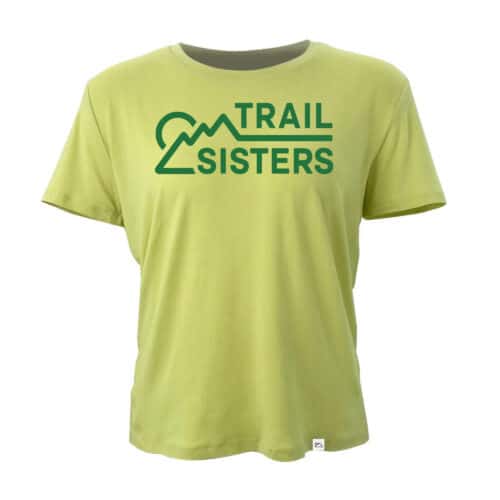Main Menu
Drop It Like It’s Hot – Shoe Drops Explained

Tara Warren is a mountain runner living in Ogden, Utah with her ultra runner hubby and three crazy boys. She finds freedom running along the dirt ribbons in her area. Running has been a hobby of hers since the early 90’s. In the last two years she has begun to dabble into the trail and ultra running scene. For Tara, it’s not all about being the fastest, but learning more about herself during the journey and having fun in the wilderness.
Share This Article!


By: Tara Warren
Having been thoroughly satisfied with my running shoes for the last several years, I have not paid enough attention to the growing shoe trends. I was definitely out of the loop with the “hot” topic of heal-to-toe drop or offset. In fact, I will admit that I really didn’t even know the definition of shoe drop and how it applied to the various brands, and even to my favorite shoes. I was excited for the task of learning and reporting to you more about it. Here’s my attempt at a glimpse of what all the discussion is about. From the history, to a little about the current market, and what shoes are recommended for whom.

Each of us have always worn shoes with drops our whole lives, without even thinking about it. Drop (or offset) refers to the difference in height between the heel area of the shoe and the forefoot, as measured in millimeters (mm). For the last 40 years or so, running shoes have historically been increasing their heel to toe ratios. As running popularity began to increase in the 1960’s, running shoe drops were in the 4-8mm range. This means the heel was 4-8mm higher, than the forefoot area. I remember working at a sporting goods store during high school in the 90’s when Nike began introducing the “air” and “gel” options to their running lineups. Those changes to the market added an the average drop in shoes between 8-12mm (the heel was now 8-12mm higher than the forefoot area). At one point Nike even brought out a 15mm drop shoe. The reception for more cushion, i.e. a greater heel to toe ratio, continued for years.

With the release of the book Born to Run in 2009, a barefoot running phenomenon swept over the running world. Many people looked at how they were running and began to consider the way in which their feet were hitting the surface. Several new companies emerged and turned their focus to the opposite direction with minimalist options similar to racing flats. Thus, the introduction of zero-drop shoes. This means there is no rise between the heel and forefoot, they both sit at an equal height within the shoe.
So, who uses what shoe for when? If you’re new to running and trying to figure out what you need or might like, I would recommend finding a running store that will give you a personal gait analysis. At that point the in-store expert can start to show you various brands and models with a personal introduction to the world of drop options.

I recently met with one of my favorite shoe gurus and trail sisters, Lauren Morin, who manages Striders in Ogden, Utah where she gave me a little history lesson. “All shoes have drops. Drops weren’t really a thing customers were requesting until the late 2000’s.” She goes on to explain to the three main types of shoe categories:
- Barefoot/minimalists – Historically, these are literally your zero-drop options that are flat and have less options as far as cushion, rock plates and/or outer sole protection. BUT! there are a few shoe brands that make a maximal cushion zero-drop shoe.
- Low profile – You will see these out on the trails pretty regularly. These are the 2-6mm drop options. These shoes require a little more of a natural stride while wearing them. Perhaps even forefoot landing would be most effective rather than heal striking.
- Standard – This is your 6-14mm drop shoe. These are the typical shoes that we have been accustom to our whole lives. And with that, this is the standard by which most running shoes are made.
All of this information just comes down to you deciding what makes sense for you and your running needs. There many be a little trial and error in determining (like most things in life), but that will lead you to finding a fit most compatible to what you need.
There is tons of information out there on this topic which can help you find various shoe models to experiment with. I wish you all the luck in your search to find the shoe that helps you get the most out of your running. As always, tag #trailsisters to show us where you are adventuring with your hotly dropped shoes!
-Editor’s Note: Whenever switching styles of shoes, or shoe drops, be sure to ease into it. The fastest way to get injured is by doing too much too soon in a new product. When moving from a 8mm heel-to-toe drop to a zero-drop (for instance), be very careful to build your miles slowly in the zero-drop shoe. Your feet/lower legs aren’t used to that new drop (additional stretch in your muscles), so take care to strengthen them. A good rule of thumb (suggestion) would be to rotate your 8mm and zero-drop back and forth, starting out with minimal mileage in the zero-drop, until your body feels strong enough to run in zero-drop full time.
Feature Photo: Justin Keller
About the Author

Tara Warren is a mountain runner living in Ogden, Utah with her ultra runner hubby and three crazy boys. She finds freedom running along the dirt ribbons in her area. Running has been a hobby of hers since the early 90’s. In the last two years she has begun to dabble into the trail and ultra running scene. For Tara, it’s not all about being the fastest, but learning more about herself during the journey and having fun in the wilderness.
Share This Article!












4 Responses
What Nike shoe had 15mm drop? Curious to know – thanks!
I need help with shoe drop. My triathlon coach was quite specific that having multiple run shoes is good for the road but they must all have the same drop (did not matter what the drop was). I wear an 8-10mm drop. I am now trying-out trail running but am finding a lot of the shoes have 4mm drop. Is it ok for my trail shoe to have a lower drop or is it best to stick to 10mm drop? (I plan to continue road running as well)
Thanks!
I have the same inquiry as Shannon F. I am currently running in 4mm road and 4mm trail shoes. I’m considering switching to a road runner with 8mm offset. Will it be ok to run in both the 8mm road shoes and the 4mm trail shoes?
It also makes a huge difference in active women over 50. As you age things wear out.DUH! For example. I have a Morton’s neuroma and so wearing a 0 drip drop shoe will kill my foot! And it’s about probation. Pronation is unique to each person. Understanding how much support your foot needs from a shoe and getting a shoe that provides that amount of support can enhance comfort, as well as improve the quality and performance of your run. This is especially true as you age. And it’s gonna happen trust me. Drop and how you personally wear out your shoe matters.